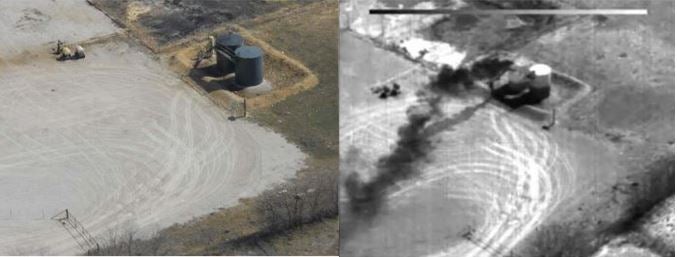 As a major producer and consumer of oil and gas, California can set the bar for reducing methane leaks. And today, the Golden State showed it’s up to the challenge, making a critical change in proposed rules aimed at cutting methane pollution from oil and gas wells, pipelines and equipment of the like – now putting California firmly on the path to adopt the nation’s strongest methane controls anywhere.
As a major producer and consumer of oil and gas, California can set the bar for reducing methane leaks. And today, the Golden State showed it’s up to the challenge, making a critical change in proposed rules aimed at cutting methane pollution from oil and gas wells, pipelines and equipment of the like – now putting California firmly on the path to adopt the nation’s strongest methane controls anywhere.
This matters because methane, the main ingredient in natural gas and a common byproduct of oil production, is a damaging greenhouse gas, with more than 80 times the warming power of carbon dioxide over a 20-year time frame.
A big lesson-learned from the months-long, mega-gas leak at Aliso Canyon, and the similarly tragic eight month gas leak in Arvin, CA in 2014, is that oil and gas infrastructure can fail. While leaks the size of Aliso Canyon are rare, it’s an example of the risk we face daily as this infrastructure ages, and a sobering reminder of how important it is to have protections that ensure methane stays in the pipelines—and not in our air. Read More











 A ruptured natural gas pipeline in the quiet community of San Bruno, California ignited on the evening of September 9, 2010. The resulting fire destroyed 38 homes, killed eight people, and injured many others. It was one of the biggest pipeline explosions in recent history, and it very likely could have been prevented.
A ruptured natural gas pipeline in the quiet community of San Bruno, California ignited on the evening of September 9, 2010. The resulting fire destroyed 38 homes, killed eight people, and injured many others. It was one of the biggest pipeline explosions in recent history, and it very likely could have been prevented.
 Year two of the California legislative cycle usually yields some bold policy ideas – and this year it looks like rethinking California’s relationship with methane and natural gas is on track to do just that.
Year two of the California legislative cycle usually yields some bold policy ideas – and this year it looks like rethinking California’s relationship with methane and natural gas is on track to do just that. The price we all pay for electricity generally does not reflect the “true costs” of producing it. As described in a recent
The price we all pay for electricity generally does not reflect the “true costs” of producing it. As described in a recent